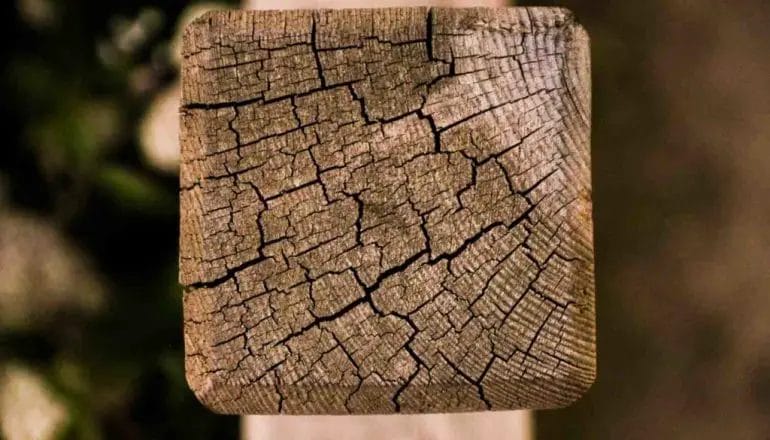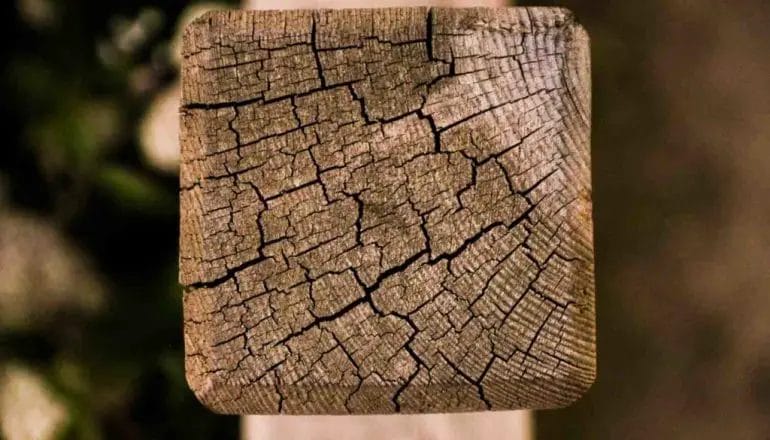Wood is a beautiful and versatile material, but it can be prone to splitting and cracking, causing frustration and disappointment. Fortunately, there are several effective methods to prevent wood from splitting. One of the most important steps is to properly dry the wood before using it, as moisture can cause the wood to expand and contract, leading to splitting. Additionally, sealing the ends of the wood with a wood sealer or paint can help to minimize moisture absorption. Another key strategy is to avoid placing the wood in direct sunlight or extreme temperature changes, as this can also contribute to splitting. By following these tips, you can enjoy the beauty of wood without worrying about unsightly splits.

Understanding Wood Splitting: Causes and Solutions
Wood splitting is a common issue that many homeowners and woodworkers face. It can be frustrating to see your beautifully crafted wooden furniture or firewood ruined by unsightly splits. Understanding the causes of wood splitting and finding effective solutions is essential to prevent further damage and maintain the integrity of your wood projects.

Causes of Wood Splitting
Wood splitting can occur due to various factors, including:
- Moisture Content: One of the primary causes of wood splitting is improper moisture content. When wood is exposed to excessive moisture, it absorbs water and expands. As the wood dries out, it contracts, leading to stress within the fibers and eventually causing splits.
- Seasonal Changes: Changes in weather and humidity levels can also contribute to wood splitting. During dry seasons, the moisture content in the air decreases, causing the wood to lose moisture and shrink. This shrinkage can result in cracks and splits.
- Incorrect Drying Methods: Improper drying methods, such as rapid or uneven drying, can cause wood splitting. When wood dries too quickly, the outer layers shrink faster than the interior, leading to tension and ultimately splitting.
- Overloading: Excessive weight or pressure on the wood can result in splitting. This is particularly common in wooden beams, where heavy objects or structural stress can cause the wood to crack.
- Wood Species: Some wood species are more prone to splitting than others. Certain hardwoods, such as oak or hickory, have a higher likelihood of developing splits due to their natural characteristics and grain structure.
Solutions for Wood Splitting
While wood splitting can be frustrating, there are several measures you can take to prevent or mitigate the issue:
- Proper Moisture Content: Ensure that the wood has the correct moisture content before using it in any project. Use a moisture meter to determine the moisture levels, and allow the wood to acclimate to the environment for a few days before working with it.
- Sealing the Ends: Applying a sealant or wax to the ends of the wood helps prevent moisture loss and controls the rate of drying. This reduces the potential for splitting.
- Slow and Controlled Drying: Implement a slow and controlled drying process to allow the wood to dry evenly and reduce the risk of splitting. Air drying or using a dehumidifier can help achieve this.
- Proper Storage: Store the wood in a dry and well-ventilated area to prevent exposure to excessive moisture. Avoid placing the wood directly on the ground to minimize the risk of absorbing moisture from the soil.
- Regular Maintenance: Perform regular maintenance on wooden structures, such as furniture or decks. This includes sanding, refinishing, and applying a protective finish to enhance durability and prevent moisture penetration.
By understanding the causes of wood splitting and implementing appropriate solutions, you can protect your wooden projects and extend their lifespan. It is essential to prioritize proper moisture management and take preventive measures to minimize the chances of wood splitting. With the right techniques and care, you can enjoy the beauty and longevity of your wood creations for years to come.

Expert Tips to Avoid Wood Splitting: A Comprehensive Guide
Wood splitting can be a frustrating issue for many homeowners and DIY enthusiasts. Whether you are working on a woodworking project or simply trying to keep your firewood stack intact, preventing wood splitting is essential. In this section, we will provide you with expert tips and techniques to avoid wood splitting and ensure the longevity and durability of your wood products.
1. Choose the Right Type of Wood
Not all types of wood are created equal when it comes to splitting. Some varieties have natural tendencies to split more easily than others. Hardwoods such as oak, hickory, and maple are known for their resistance to splitting. On the other hand, softwoods like pine and spruce are more prone to splitting. By choosing the right type of wood for your project, you can minimize the risk of splitting.
2. Properly Season and Dry the Wood
One of the main causes of wood splitting is moisture. When wood contains high levels of moisture, it is more likely to split as it dries out. Therefore, it is crucial to properly season and dry your wood before using it. This process involves storing the wood in a well-ventilated area with proper airflow for an extended period, allowing the moisture content to reduce. Ideally, wood should be seasoned for at least six months to a year before use.
3. Avoid Rapid Changes in Moisture Content
Rapid changes in moisture content can cause wood to expand and contract rapidly, leading to splitting. To prevent this, it is important to store wood in a controlled environment that maintains a consistent moisture level. Avoid exposing the wood to extreme temperature and humidity fluctuations, such as placing it directly next to a heat source or storing it in a damp basement.
4. Use Proper Cutting Techniques
The way you cut the wood can also affect its tendency to split. When making cuts, it is important to follow the natural grain of the wood. Cutting against the grain increases the likelihood of splitting. Additionally, using sharp cutting tools and ensuring a clean and smooth cut can help minimize the risk of wood splitting.
5. Pre-drill Holes for Nails and Screws
When fastening wood together with nails or screws, it is advisable to pre-drill holes before inserting them. Pre-drilling creates a space for the fastener, reducing the pressure on the wood and minimizing the chances of splitting. The diameter of the pre-drilled hole should be slightly smaller than the diameter of the fastener.
6. Apply Moisture-Resistant Coatings
Applying a moisture-resistant coating to the surface of the wood can provide an extra layer of protection against splitting. This can be in the form of paint, varnish, or wood sealants. These coatings help to seal the wood and prevent moisture from penetrating, reducing the risk of splitting.
7. Store Wood Properly
Proper storage of wood is essential to avoid splitting. Whether you are storing firewood or lumber, it is crucial to keep it off the ground and protected from moisture. Use a raised platform or pallets to elevate the wood and allow proper airflow. Cover the wood with a waterproof tarp or store it in a dry shed or garage to protect it from rain and snow.
8. Consider Pressure Treatment
If you are working with wood in outdoor projects or in areas prone to moisture, consider using pressure-treated wood. Pressure treatment involves treating the wood with chemicals that make it more resistant to moisture, rot, and insect damage. This can significantly reduce the risk of splitting and increase the lifespan of the wood.
In summary, preventing wood splitting requires careful selection of wood, proper seasoning and drying, avoiding rapid changes in moisture content, using proper cutting techniques, pre-drilling holes for fasteners, applying moisture-resistant coatings, storing wood properly, and considering pressure treatment. By following these expert tips, you can minimize the risk of wood splitting and ensure the longevity and durability of your wood products.

How to Protect Wood from Splitting: Proven Methods and Tools
If you work with wood, you know that splitting can be a frustrating and costly problem. Whether you are building furniture, constructing a deck, or simply working on a DIY project, preventing wood from splitting should be a top priority. In this section, we will discuss some proven methods and tools that can help you protect wood from splitting.
1. Proper Moisture Content
One of the main causes of wood splitting is excessive moisture content. When wood absorbs moisture, it expands. As the wood dries out, it contracts, causing stress that leads to splitting. To prevent this, it is essential to ensure proper moisture content in the wood before using it.
Using a moisture meter, you can measure the moisture content of the wood. The ideal moisture content for interior woodworking projects is around 6-8%, while for exterior projects, it should be between 12-15%. To achieve the desired moisture content, you can store the wood in a dry area or use a dehumidifier to remove excess moisture.
2. Seal the Ends
Wood tends to split more easily from the ends. By sealing the ends of the wood, you can minimize moisture absorption and reduce the risk of splitting. There are several products available, such as end-grain sealer or paraffin wax, that can effectively seal the ends of the wood. Simply apply the sealer or wax to the end grain to create a barrier against moisture.
3. Use Pilot Holes
When driving nails or screws into wood, it is important to use pilot holes. Pilot holes are small, pre-drilled holes that guide the fastener into the wood. By using pilot holes, you reduce the amount of stress on the wood, preventing it from splitting. Make sure the pilot hole size matches the diameter of the fastener you are using.
4. Avoid Over-Tightening
Over-tightening screws or bolts can exert excessive pressure on the wood, leading to splitting. It is crucial to tighten the fasteners properly, neither too loose nor too tight. If you encounter resistance while tightening, stop and assess the situation. Applying too much force can cause the wood to crack or split.
5. Use Wood Glue
Wood glue is an excellent tool for preventing wood from splitting. When applied to joints or edges, wood glue reinforces the wood and reduces the chances of splitting. Choose a high-quality wood glue and make sure to apply it evenly. Clamp the wood pieces together until the glue dries to ensure a strong bond.
6. Select the Right Tools
Using the right tools for your woodworking projects can make a significant difference in preventing wood splitting. Blunt or dull tools can cause more damage to the wood and increase the risk of splitting. Keep your tools sharp and clean, and use the appropriate tools for each task. This will not only protect the wood but also result in better-quality work.
7. Allow for Natural Movement
Wood naturally expands and contracts with changes in temperature and humidity. If you restrict this movement, the wood is more likely to split. When designing and building with wood, allow for natural movement by leaving small gaps or using hardware that accommodates wood expansion and contraction.
8. Apply Protective Finishes
Applying a protective finish to wood surfaces can help prevent splitting. Finishes like varnish, polyurethane, or paint create a barrier that shields the wood from moisture and other damaging factors. Make sure to apply the finish evenly and follow the manufacturer’s instructions for optimal protection.
Summary
Protecting wood from splitting is essential for any woodworking project. By following these proven methods and utilizing the right tools, you can minimize the risk of wood splitting and ensure the longevity and durability of your creations. Remember to check the moisture content, seal the ends, use pilot holes, avoid over-tightening, apply wood glue, select the right tools, allow for natural movement, and apply protective finishes. With these measures in place, you can enjoy working with wood without the frustration of split wood.
Preserving Wood Quality: Effective Strategies to Prevent Splitting
Wood is a versatile and commonly used material in various industries. Whether it’s used for construction, furniture, or crafts, preserving the quality of wood is essential to ensure durability and longevity. One common issue that woodworkers and craftsmen face is splitting. Splitting occurs when the wood fibers separate, leading to cracks and damage.
In this section, we will explore effective strategies to prevent splitting and maintain the quality of wood products.
1. Choose the Right Type of Wood
The choice of wood plays a significant role in preventing splitting. Different wood species have varying levels of natural resistance to splitting. Hardwoods such as oak, maple, and teak are known for their durability and resistance to splitting. Softwoods like pine and cedar, on the other hand, are more prone to splitting.
When selecting wood for your project, consider the environment in which it will be used. If the wood will be exposed to moisture or extreme temperature changes, opt for a more stable and less prone to splitting wood species.
2. Proper Drying Techniques
Moisture is one of the leading causes of wood splitting. It’s crucial to properly dry the wood before using it in any project. Air drying and kiln drying are two common techniques to remove moisture from wood.
Air drying involves stacking and storing the wood in a controlled environment with good air circulation. This process can take months to years, depending on the type and thickness of the wood. Kiln drying, on the other hand, is a faster method that uses heat to remove moisture from the wood. It ensures a more uniform drying process and reduces the chances of splitting.
3. Seal the Ends
Wood tends to lose moisture faster from the ends, which can lead to splitting. To prevent this, it’s important to seal the ends of the wood. Applying end grain sealers or wax helps to slow down the moisture loss and minimize the risk of splitting.
Sealing the ends should be done as soon as possible after cutting or sawing the wood. It creates a barrier and helps maintain the moisture balance throughout the piece of wood.
4. Proper Handling and Storage
The way wood is handled and stored can greatly impact its quality and susceptibility to splitting. It’s essential to handle the wood with care, avoiding dropping or mishandling that can lead to internal stresses and weakening of the fibers.
When storing wood, it’s important to keep it in a dry, well-ventilated area. Moisture exposure can cause the wood to expand and contract, increasing the chances of splitting. Storing wood in a vertical position with proper support can also help prevent warping and bowing.
5. Pre-drill and Pre-vent
When fastening wood pieces together, pre-drilling and pre-venting can help prevent splitting. Pre-drilling involves creating pilot holes before inserting screws or nails. This reduces the stress on the wood and minimizes the risk of splitting.
Pre-venting is another technique where small holes are drilled along the length of the wood to release internal stresses. These holes act as relief points and prevent the wood from splitting when subjected to pressure or changes in moisture content.
Summary
Preserving the quality of wood and preventing splitting requires a combination of careful wood selection, proper drying techniques, sealing the ends, proper handling and storage, and using pre-drilling and pre-venting techniques. By implementing these strategies, woodworkers and craftsmen can maintain the integrity and durability of their wood products, ensuring their longevity and customer satisfaction.
FAQs
How can I prevent wood from splitting?
To prevent wood from splitting, make sure to properly store and handle the wood. Avoid exposing it to extreme temperature and moisture changes. Seal the ends of the wood to prevent moisture loss and use pilot holes when driving nails or screws. Applying a protective finish can also help reduce splitting.
Conclusion
In conclusion, preventing wood from splitting can be achieved through several simple measures. Firstly, ensuring that the wood is properly seasoned and dried before use can significantly reduce the likelihood of splitting. Secondly, applying a sealant or finish to the wood can help to maintain its moisture content and protect it from environmental factors. Additionally, avoiding excessive exposure to heat and humidity, as well as using appropriate fasteners and construction techniques, can further prevent splitting. Regular maintenance and inspection of the wood for any signs of damage or cracks are also essential for its longevity. By implementing these practices, you can effectively keep wood from splitting and prolong its lifespan.
